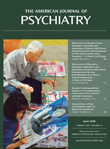Recent Trends in Stimulant Medication Use Among U.S. Children
Abstract
Objective: Stimulant medications, such as methylphenidate and amphetamines, are commonly prescribed to treat attention deficit hyperactivity disorder. Stimulant use increased fourfold from 1987 (0.6%) to 1996 (2.4%) among subjects 18-year-old and younger in the U.S. The aim of this study was to determine whether pediatric use of stimulants continued to rise during the period 1997–2002. Method: The Medical Expenditure Panel Survey (MEPS) database for the years 1997–2001 was analyzed. The MEPS is a yearly survey of a nationally representative sample of civilian, noninstitutionalized U.S. households, conducted by the U.S. Agency for Health Care Research and Quality. Previously reported estimates from the 1996 MEPS and the 1987 National Medical Expenditure Survey, the predecessor to MEPS, were also replicated to compare recent trends to changes between 1987 and 1996. Results: The prevalence use of stimulants among subjects under 19 years of age was 2.7% (95% C.I. 2.3–3.1) in 1997 and 2.9% (95% C.I. 2.5–3.3) in 2002, with no statistically significant change during these 6 years. Likewise, when pooling data across years and comparing the rate in 1997–1998 (2.8%) with the rate in 2001–2002 (3.0%), no statistically significant changes emerged. Use was highest among 6–12 year olds (4.8% in 2002), as compared with 3.2% among 13–19 year olds and 0.3% among children under 6. An estimated 2.2 million (95% C.I. 1.9–2.6) children received stimulant medication in 2002 as compared to 2.0 million (95% C.I. 1.7–2.3) in 1997. Conclusions: The steep increase in the utilization of stimulants among children 18 years and younger that occurred over the 1987–1996 period attenuated in the following years through 2002, and has remained stable among very young children.



